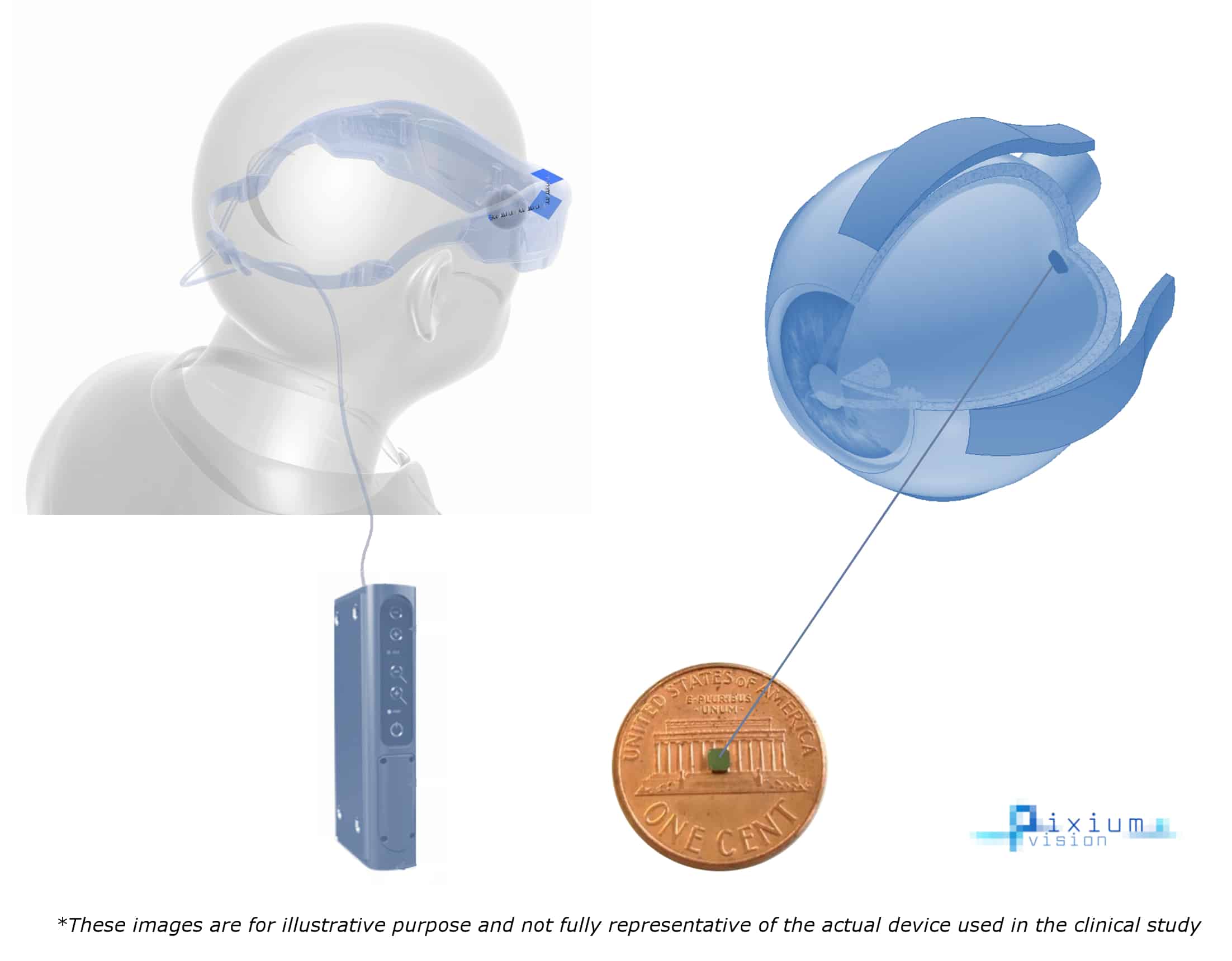PRIMA SYSTEM
TECHNOLOGY
The Prima System is intended to partially replace the normal physiological function of the eye’s photoreceptor cells by electrically stimulating the nerve cells of the inner retina, which then transmit the visual information to the brain via the optic nerve.
Prima System features

- Configured to be minimally invasive with its miniaturized design
The PRIMA implant used in the feasibility clinical study is of 2x2mm size and 30 microns thick (third the size of a human hair). It is a miniaturized passive and totally wireless sub-retinal implant that acts like a tiny solar panel that is powered by pulsed near infrared light through a miniaturized digital projector integrated in the pair of glasses worn by the implanted subject. PRIMA implant’s small size and wireless design enables minimally invasive surgery, which could be performed under local or general anesthesia.
- Aiming to improve the perceptual resolution and designed for a physiological signal processing
in addition to minimally invasive surgery, the aim of the Prima System design was also to potentially improve the resolution of the prosthetic artificial visual perception by implanting directly at the level of the degenerated photoreceptors. the sub-retinal implantation leverages a physiological network that is still functioning: the internal retinal layers. The PRIMA wireless photovoltaic subretina implant also comprises 378 electrodes with each pixel having its own local electrical return path aiming to provide more targeted electrical stimulations.
The Prima System aims to elicit functional artificial, or bionic, vision in the form of light perception replacing partially the natural central vision loss. The Prima System is composed of three main elements: Wireless retinal implant, pair of glasses with a camera and digital projector, and a pocket processor.
The Prima System operating principle
A mini camera mounted on the glasses captures visual scenes in the environment. The visual scene is processed and simplified by the pocket computer equipped with breakthrough algorithms from artificial intelligence in order to extract useful information from the images.
The simplified images are then sent back to the glasses where a miniaturized digital projector then projects the processed images via pulses of near infrared light on the PRIMA wireless photovoltaic subretina implant, through the pupil, at the back of the eye under the retina.
The photovoltaic cells of the PRIMA implant convert this optical information into electrical stimulation to excite the bipolar nerve cells of the inner retina and subsequently induce visual perception in the brain.
